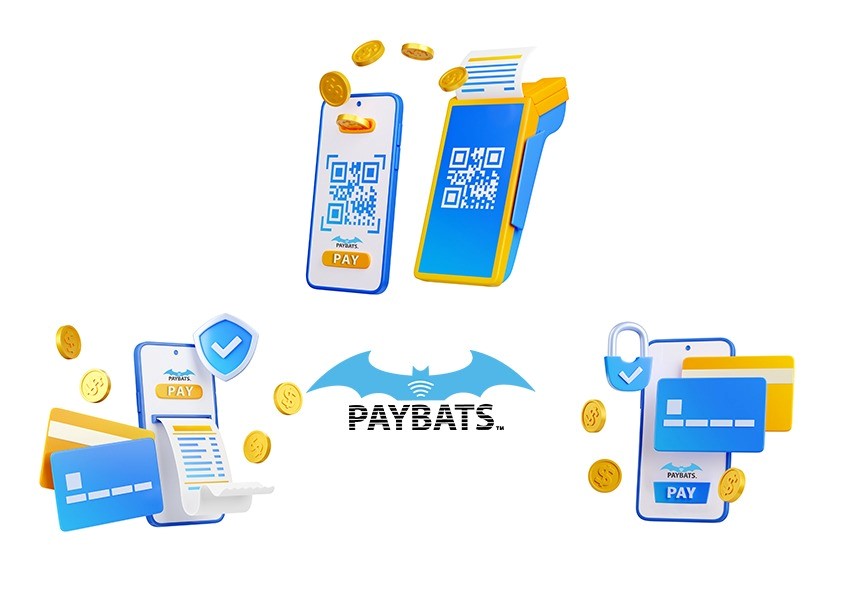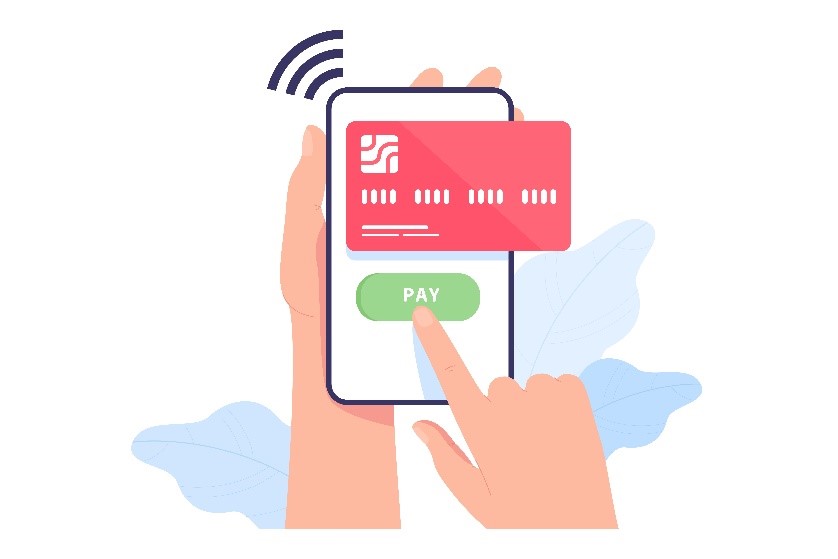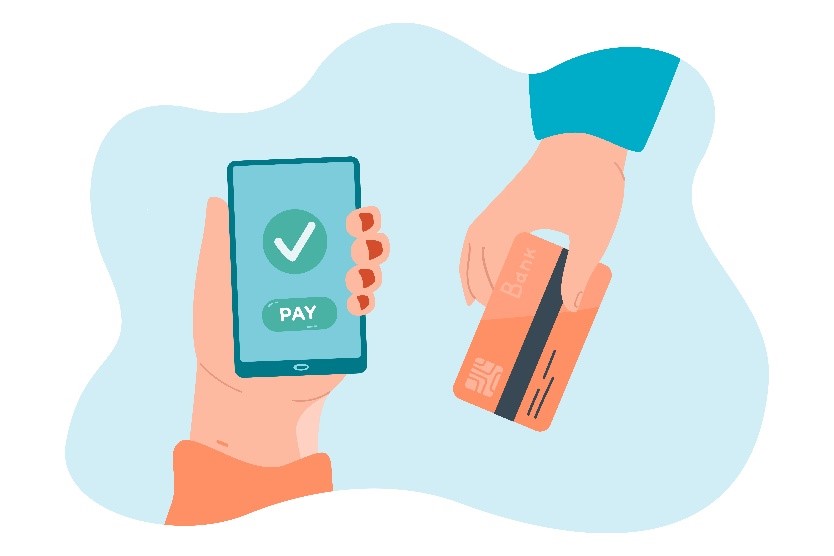Cashless payment trend in SEA market
Are you looking for a faster and more convenient way to pay? With the rapid advancement of digital technologies, cashless payments are becoming more popular in Southeast Asia. This easy-to-understand payment trend has been rapidly gaining traction across countries within the region. By understanding this relatively new concept, consumers can easily save time and money while optimizing their daily transactions! In this blog post, we’ll discuss the rise of cashless payments in Southeast Asian markets along with various benefits that come along with it. So if you’re excited to learn more about how digital currency could revolutionize your financial future, read on!
What is Cashless Payment?

Cashless payments, also known as ecommerce, are becoming increasingly common around the world. By eliminating the need for tangible money, cashless payment systems give businesses and consumers more options to quickly and securely make payments. Accepting cashless payments often requires specialized technology that detects online capabilities such as e-wallets and credit cards, enabling digital transactions with a few clicks of a button. With the development of new technologies such as contactless payment systems, it is now possible to complete transactions quickly with minimal effort. This makes cashless payments an attractive mode of money transfer for both buyers and sellers in today’s ever-evolving global economy.
An Overview of SEA Market

The South East Asian (SEA) ecommerce market is one of the fastest growing and thriving ecommerce markets in the world. It is estimated that the size of this market will reach up to $1.3 trillion in ecommerce sales by 2025 – and as such, it’s no wonder that brands and ecommerce businesses are beginning to recognize its potential. This region boasts a high GDP growth rate along with an increasing affluent consumer base that has access to sophisticated payment platforms making SEA ecommerce a profitable venture for entrepreneurs, companies, and ecommerce websites alike. With interesting cultural elements ingrained into the economy, along with the presence of young tech-savvy consumers online, this region has become an attractive ecommerce hub for many who seek greater connection with their customers.
Cashless payment has become increasingly popular in the South East Asian ecommerce market, with more people relying on cashless and digital payment methods for their everyday purchases. From Malaysia to Indonesia, they have seen a surge of ecommerce businesses offering convenient, fast and secure ways to make payments. For example, e-wallets are growing as a preferred option for many customers due to the convenience they provide and their enhanced security features that protect users’ sensitive information. Additionally, many ecommerce companies are offering promotions such as discounts for new users who sign up for cashless payment options. As a result, cashless payment adoption continues to skyrocket in South East Asia, establishing it as an emerging ecommerce hub with incredible potential for growth.
Over the past several years, the region’s ecommerce industry is becoming increasingly digitized and reinforcing services such as Paypal and other e-wallet options, such as Touch N Go e-wallet, Grabpay, Shopeepay, Alipay etc, are enabling customers to purchase goods quickly and securely.
Current Trend of Cashless Payment in SEA Market
The ecommerce revolution has made a major impact in the South-East Asian region. The current trend of surging cashless payments offer a new level of convenience that was unheard of just a few years ago. Fintech startups such as GoCashless are playing an integral part in making it easier for businesses and consumers to move away from traditional payment methods. This development is enabling millions of people in SEA economies to access ecommerce transaction more quickly and safely than ever before.
The cashless payment economy is growing at an exponential rate in the South East Asian market. This trend is driven by the increasing digitalization of the region and its gradual shift from traditional physical currency payments to electronic payment systems such as e-wallets, mobile money transfers and digital banking platforms.
Digital Wallets

Digital wallets have made a huge impact on the South East Asian market towards a cashless payment system. Consumers in South East Asia now enjoy the convenience and security of making payments anytime and anywhere with these digital wallets. Increasingly strict regulations and heightened customer experience standards also add to the increasing popularity of digital wallets in this region. Businesses are now expanding their scope by offering multiple modes of payment, such as credit/debit cards, e-wallets, etc., which can be integrated within existing systems to make transactions more efficient. With potential for further growth in this market, digital wallets will continue to remain an attractive option for businesses and consumers alike.
Mobile Payments

Mobile payments are revolutionizing the way people shop and transact in South East Asia. In a recent study, it was concluded that cashless transactions increased by over 25% in this region. The rise of mobile payments has made it faster and more convenient to make purchases without carrying any physical cash or cards. Additionally, several governments in South East Asia have been introducing supportive policies that promote cashless solutions such as providing incentives for using digital payment options. This emerging trend allows for decreased waiting times at checkouts, risk mitigation through built-in authentication measures and visibility over activities to better track spending. It is evident that the wider acceptance of mobile payments will be an important part of this region’s economic growth trajectory in the future.
Contactless Cards

In recent years, contactless cards have become a widespread form of payment in South East Asian markets. This cashless payment method offers a convenient and expedient checkout process by allowing consumers to make payment quickly with the simple tap of their card or phone. Contactless cards are easily accessible for users and provide easy security access for merchants. Additionally, more establishments are now accepting contactless payments as an option to process their transactions faster and securely. As the trend continues to grow in this region, it is likely that contactless payments will become a mainstay in the industry as they set out to revolutionize the way customers make payments in the Southeast Asia market.
Point-of-Sale (POS) Terminals

South East Asia is currently experiencing an unprecedented transformation in the way it processes payments – cashless payment through Point-of-Sale (POS) terminals. This shift away from a traditional reliance on physical currency is driven by several factors such as improved customer convenience, tighter regulations, and surges of tech-savvy consumers. These terminals are now commonplace in markets ranging from Singapore to Indonesia to Thailand, providing fast and secure payment processing. Furthermore, retailers and merchants in South East Asia are finding that adopting these terminals can help streamline operations and minimize errors – translating into significant cost savings. As the market grows rapidly, it is clear that POS terminals are all set to revolutionize the way South East Asian customers transact with each other for years to come.
Prevalence and Usage Rates for Cashless Payments in SEA Region
The South East Asian (SEA) region is becoming increasingly cashless, with more people turning to digital payment methods like mobile wallets and e-banking services. According to the 2020 Global Payments Report by Euromonitor International, the SEA region’s use of digital payments has grown significantly over the past two years. In 2019, this growth rate was recorded at 22%, nearly double that of 2018.
In terms of prevalence and usage rates for cashless payments in SEA region, statistics from the 2020 Global Payments Report show that Indonesia had the highest adoption rate (66%), closely followed by Vietnam (65%) and Malaysia (64%). This indicates that Indonesian people are more open to using digital payment methods than their counterparts in other SEA countries. On the other hand, Singapore had a relatively low adoption rate of only 35%. However, it should be noted that Singapore already had one of the highest adoption rates for cashless payments in 2018; indicating a relative slow growth rate compared to other countries in the SEA region.
Malaysia

Bank Negara Malaysia has seen tremendous growth in the usage of cashless payments in the South East Asian market in Malaysia, especially with the introduction of Touch N Go Ewallet. This innovative electronic platform allows users to safely and quickly make payments at various spots across the country. Bank Negara Malaysia has been actively promoting cashless payment solutions and providing various forms of incentives like discounts, deals and cashback rewards that encourage an increase in adoption rate of these methods. As more stakeholders jump on board, Bank Negara Malaysia is confident that cashless transactions will become the preferred method among Malaysians, effectively revolutionizing how we transact today.
Philippines

The usage of cashless payment in the South East Asian market in the Philippines is rapidly increasing due to its convenience and security. Companies within this region are taking steps to ensure their customers have an easy and efficient way to pay for goods and services. With options such as debit/credit cards, online technologies, and mobile wallets being integrated as part of everyday life, it is no wonder that cashless payments are becoming increasingly popular. As the economy continues to grow in this region, so will opportunities for safe, secure methods of payment. Companies focused on meeting customer needs by quickly adapting payment technology that is convenient will be well-positioned for success.
Thailand

Cashless payment is an increasingly popular form of payment in Southeast Asia and Thailand is no exception. The usage rate of cashless payments has been steadily increasing in Thailand, and businesses are increasingly adopting new technologies to keep up with modern demands. According to recent studies, Thai consumers are now embracing technology as a way to pay for services and goods more quickly and securely than ever before. As businesses rush to provide customers with easy-to-access online transactions and flexible payment options, the usage rate of cashless payment is likely to continue increasing in the coming years. This evolving trend could prove especially beneficial for businesses in Thailand, as it will undoubtedly bring convenience and cost savings in terms of time, labor, and resources.
Vietnam

In large parts of South East Asia, Vietnam is leading the way in terms of cashless payment and digital transactions. The usage rates of cashless payments and e-wallets has been increasing in the country for several years now and looks set to continue its growth trend. With a strong integration of mobile technology and a population that is becoming ever more tech savvy, this economic shift looks set to dominate the market as people increasingly opt to make quick and easy online payments over traditional currencies. This allows businesses increased transparency while also saving them time and money when dealing with currency conversion. Companies who have get on board with Vietnamese market trends early can take advantage of this changing landscape quickly, allowing them to be at the forefront of cashless payments in the region.
Factors Driving the Growth of Cashless Payments in Southeast Asia
Cashless payments have grown exponentially in Southeast Asia, driven by a variety of factors that offer convenience and security. Factors like the rise of tech-savvy consumers, increased availability of digital payment options, and favorable government policies have made cashless payments more popular than ever before. With mobile and digital wallets being easily accessible on smartphones, users are able to comfortably and securely perform transactions at any time, anyplace. Moreover, the 2016 ASEAN Banking Integration Framework (ABIF) has also given rise to interoperable financial products across different Southeast Asian countries that are integrated with each other’s payment systems.
Growing Consumer Awareness about Fintech Solutions
As access to digital banking and mobile payment methods become increasingly widespread, consumers have been more open to taking advantage of these technologies. Companies are also capitalizing on this trend by responding to consumer demand with solutions that are faster, more secure, and more convenient than traditional cash-based methods. This, in turn, has resulted in higher rates of adoption for digital payments across a wide range of industries throughout Southeast Asia. The continuing rise in consumer confidence surrounding digital payments bodes well for the future market penetration and financial inclusion of fintech services within the region.
Increased Use of Social Media Platforms for Shopping and Payments
With the widespread use of social media and mobile technology in Southeast Asia, cashless payments have become increasingly popular in recent years, especially for shopping and payments. Social media platforms such as Instagram and Facebook have discovered new markets and business opportunities by providing consumers safe and convenient ways to shop. This has allowed companies to launch digital stores where they can safely process transactions without the hassle of handling physical cash. Additionally, the growing availability of digital payment solutions like Paypal, PAYBATS and RazerPay has streamlined shopping processes, reducing the need for traditional banking services while providing incredible convenience to customers who no longer need to queue at ATMs or branches to pay their bills or transfer funds. As a result, increased use of social media platforms as well as digital payment solutions are significant factors driving the growth of cashless payments across Southeast Asia.
Government Initiatives to Promote Ease of Doing Business Through Digitalization
The rising trend of digitalization has been aiding government initiatives in Southeast Asia to promote ease of doing business, which is driving the growth of cashless payments in the region. As governments have implemented favorable policies such as reducing taxes and easing bureaucratic procedures, businesses have been encouraged to shift towards digitized solutions as they offer more convenience and efficiency while enhancing user experience. Moreover, in order to ensure a fast adoption rate among users, firms are investing heavily in marketing campaigns and rolling out lucrative offers for cashless transactions. This has not only increased user confidence but also served the purpose of evangelizing cashless solutions over traditional payment systems. Overall, with innovative solutions and supportive government policies, it is expected that the market for cashless payments will continue gaining momentum in Southeast Asia.
A wide Array of Benefits
Cashless payments are making a big impact in Southeast Asia, with growing demand for convenience, improved access to services, enhanced security, faster transaction speeds and cost savings. All of these benefits have enabled cashless payment solutions to enjoy unprecedented levels of adoption across the region’s diverse countries and cultures. This indicates a substantial shift away from traditional forms of payment toward digital alternatives, resulting in major improvements not only to users’ experiences but also to the economic infrastructure as a whole. With new technological developments like blockchain making digital payments easier than ever before, it is likely that the trend towards cashless payments in Southeast Asia will continue at an even greater level in the years ahead.
Rising Inflows From Investors and Venture Capitalists
Southeast Asia is experiencing an unprecedented growth in the field of cashless payments. The influx of investors and venture capitalists has nurtured this growth, providing not only much-needed capital but also technical assistance to propel digital payment systems forward. This rising trend has made it easier for consumers to connect with businesses and make purchases without needing physical currency, thus eliminating the lengthy and costly paperwork associated with traditional banking processes. Beyond their convenience, cashless payments have been found to increase economic efficiency and decrease day-to-day expenses within the region. It is no wonder that such solutions are becoming increasingly popular among both industry leaders and everyday consumers.
Increased Uptake by Businesses
By creating digital payment solutions, companies are able to improve user experience and provide access to a variety of convenient payment methods including e-wallets, internet banking and credit cards. Lowering the time taken for transactions and reducing costs associated with traditional methods such as using cash have been important drivers of this shift, making cashless payment platforms the preferred choice for today’s informed consumers. It has become clear that offering modern payment solutions has become increasingly essential in sustaining competitive advantages in today’s market, therefore, driving the widespread growth of cashless payments across Southeast Asia.
Going cashless is not a fashion but rather, it is a sustainable and forward-looking business model for merchants in South East Asia. With the availability of many options for cashless payments, there is no reason why companies should not adopt this mode of payment. PAYBATS is one such solution that offers a comprehensive suite of features to help businesses go cashless. Request a free demo today to see how we can help you!
References
https://fintechnews.sg/51904/payments/85-of-consumers-in-sea-adopt-cashless-payment-solutions/
https://techcollectivesea.com/2022/06/27/cashless-fintech-report/
https://southeastasiainfra.com/going-cashless-sea-sees-uptake-in-digital-payments/
https://www.paymentasia.com/en/market-news/south-east-asias-rising-digital-payments-landscape/

